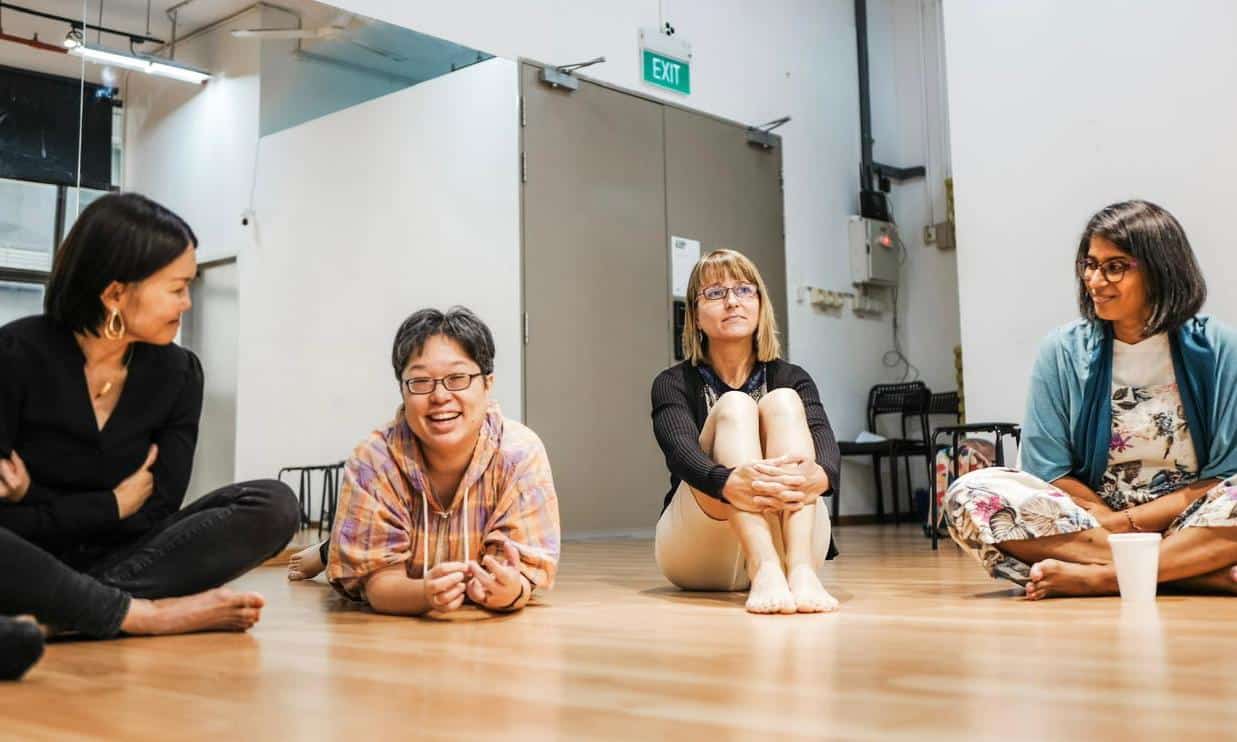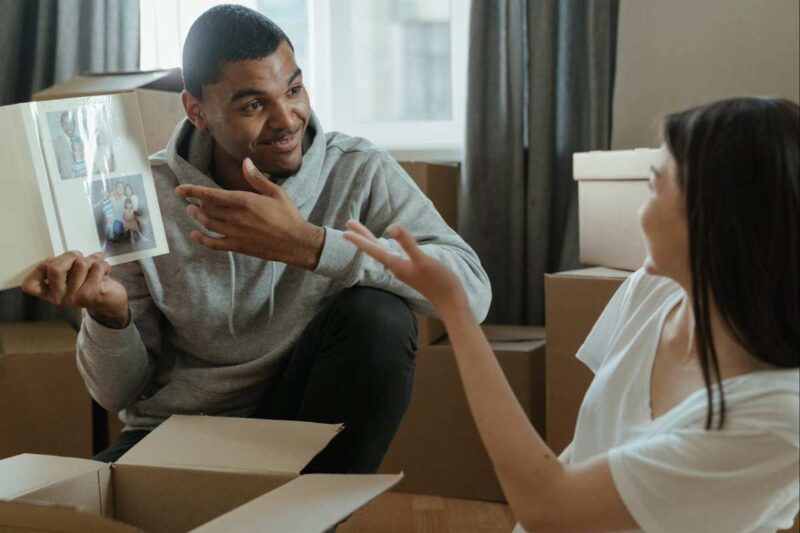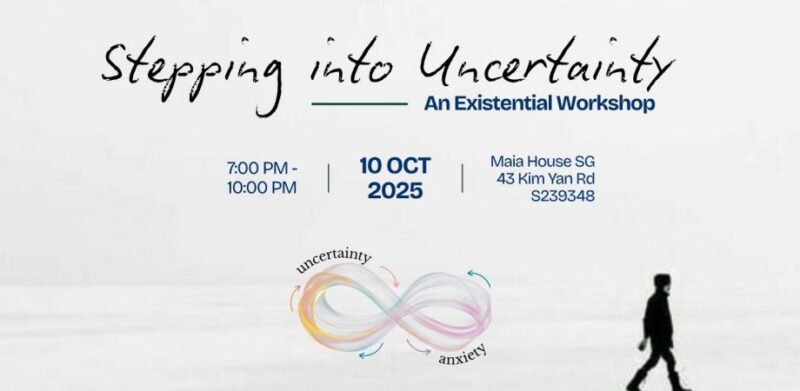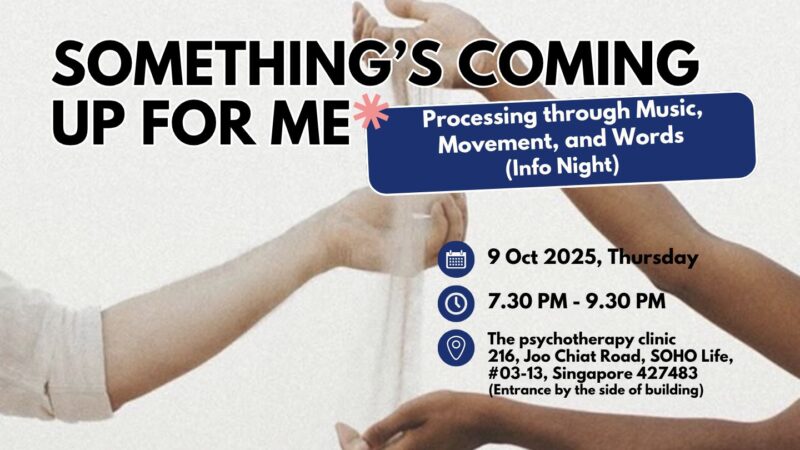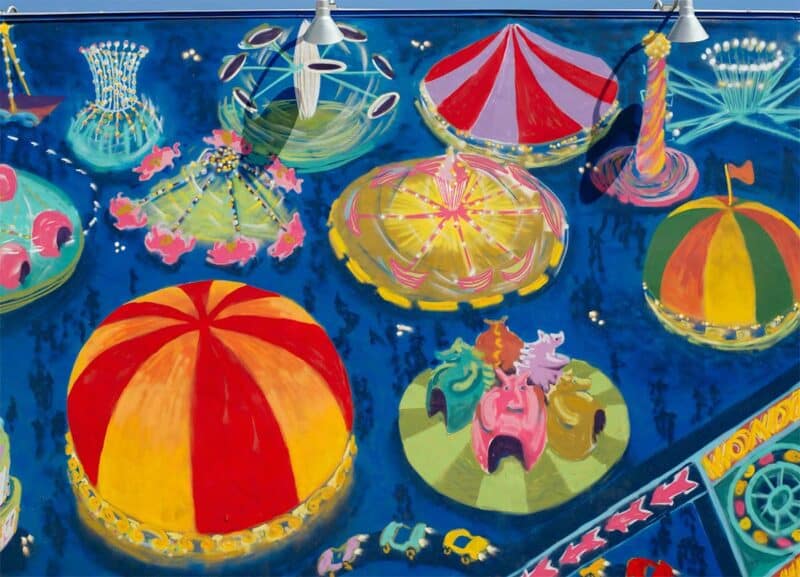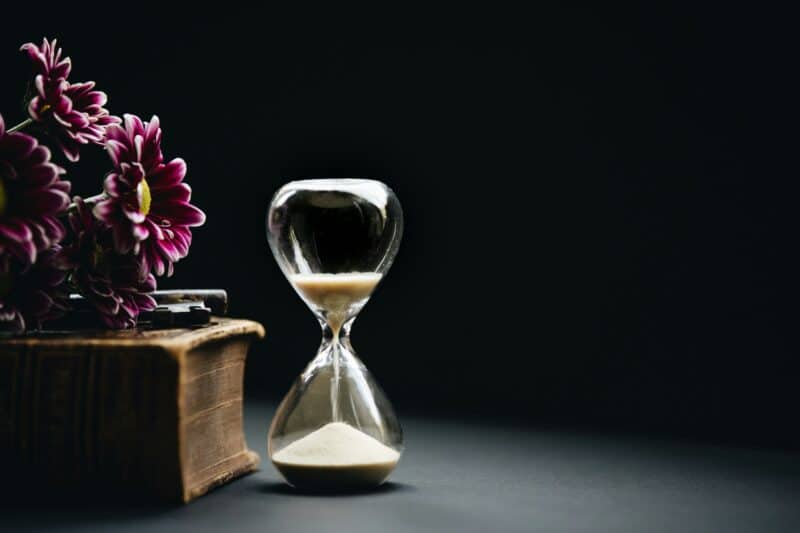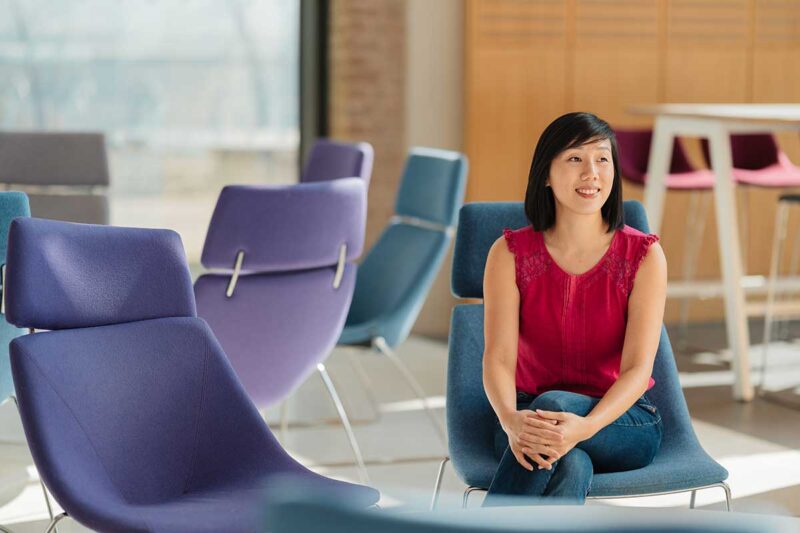I’ve carried a vision for years—a hope to grow existential therapy in Singapore beyond the therapy room. Not just as an approach for individuals in talk therapy, but as a way of living, relating, and becoming.
A space where we understand ourselves arise not by turning further inward, but by going outward—into movement, into sound, into shared space.
It fills me with such deep joy (and a bit of awe) to say: it’s starting to happen!
On 4 June 2025, I took one step closer to that dream. Alongside three colleagues, Renee Chua, Evelyn Lee and Dr Simon Neo —each bringing our own practice into the mix—we co-facilitated a one-day experiential retreat.
Though we don’t all speak the same theoretical language, I’ve carried a quiet conviction that what they bring speaks deeply to existence—sometimes in ways words alone cannot. Together, we offered a day of embodied, relational, and creative way to explore what it means to exist.
We are our sensing, moving bodies—not just thinking minds
Have you ever walked into a room and felt your body respond before your mind caught up? Maybe your shoulders tensed slightly. Or your breath changed. You didn’t decide to feel that way. It just happened.
So often, we treat ourselves as if we’re just minds—like everything important happens in our heads. That’s what a lot of journaling, self-care or talk therapy leans on too, right?
But we’re not just thinking beings. We’re sensing, moving, breathing bodies. And the body often knows things before we do. What you feel in your body—tension, rhythm, stillness, breath—shapes your experience just as much as the words you use.
At the retreat, we explored this through movement. Not to perform or perfect anything, but to pay attention.
To what though?
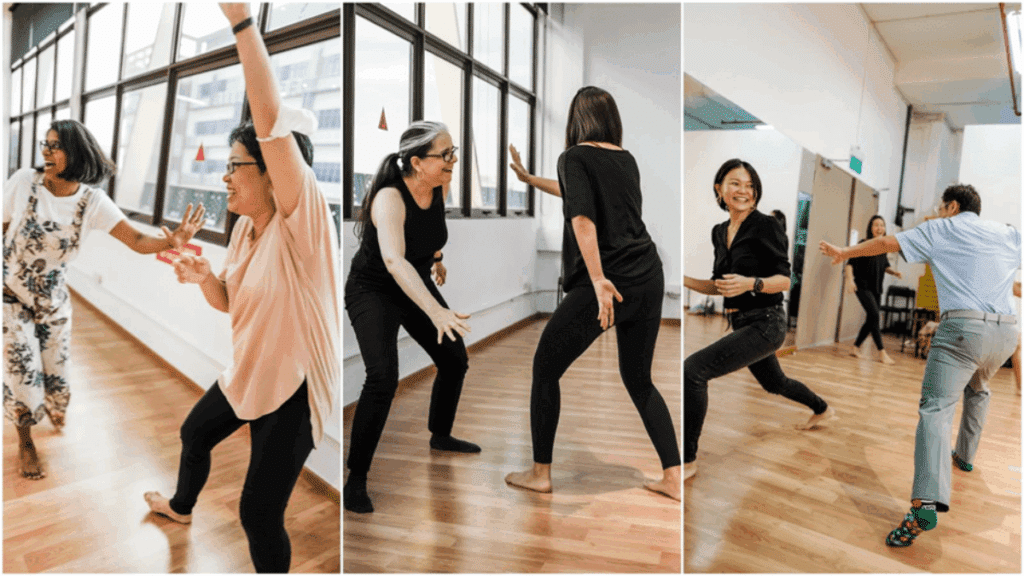
How do I move when someone steps close?
What happens to my breath when I know I’m being seen?
Can I stay with myself when others are speeding up?
It was not dance or posture that we were learning. We were cultivating a certain sense of presence—who I become in the company of others. How I shift when someone else shifts? What softens in me when I’m not trying to hold it all together?
We explored our bodies and our relationship with ourselves and others through music improvisation as well.
Each of us reached for an instrument—some familiar, some a little strange. Drums, bells, shakers, chimes. No conductor. No plan.
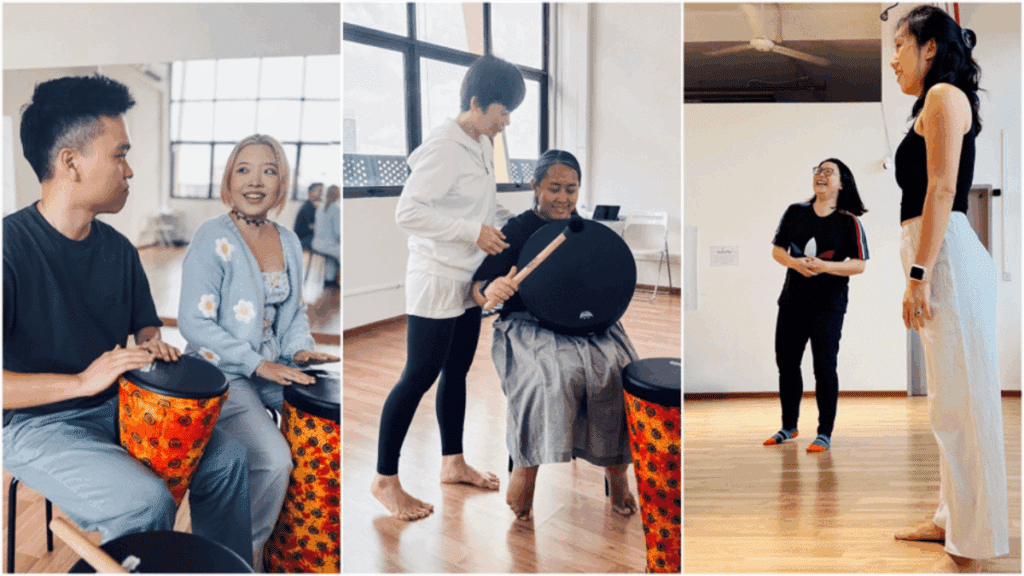
We started layering sound, one person at a time. Sometimes we followed. Sometimes we held back. Sometimes someone broke the rhythm—and somehow that opened something new.
We were trying to find and sense each other. Feeling into what it means to be heard, to offer something, to be part of something without losing yourself.
And in those unscripted moments—through rhythm, tension, silence, surprise—something honest began to emerge.
“In these moments, we come to understand ourselves not just by thinking or talking, but through the ways we move, are moved, and resonate with the world around us.”
Language shapes how we experience the world
What about trying explain our thoughts, and only realised what we meant halfway through saying it? Have you ever experienced something similar?
For me, language is not just a tool for communication. We don’t wait until we fully understand ourselves to speak—we come to know who we are through the very act of trying to express ourselves. Even when we are silent—whether by choice, fear, or habit—we are still in relation to others.
We explored how to use what we’re most familiar with—spoken words—to relate in unfamiliar ways. Not polished. Not prepared. Just whatever was real in the moment.
In a group process work, we gave ourselves permission to try: to name how we felt, to ask for support, to offer feedback, to say what we liked and what we didn’t. Sometimes we spoke from connection. Sometimes from disconnection. And sometimes, we didn’t speak at all.
But even then, the silence was part of the dialogue.
We began to notice the weight of certain words. The urge to comfort, or to withdraw. The moments when we wanted to reach out.
Like offering a hug, if you were to express yourself in words rather than a hug, what do you want to say to the other?
Beneath it all was a shared attempt: to reach toward each other honestly, even when it felt uncertain in the here-and-now.
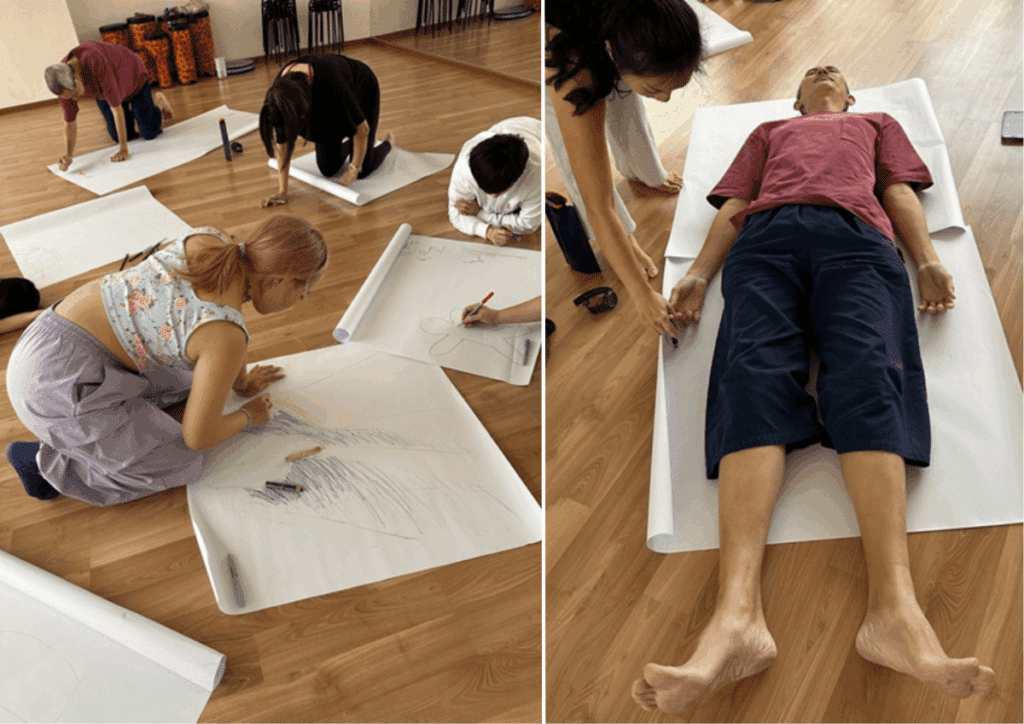
“Abracadabra— like magic but not it’s not just a magic word. Its ancient root means “I create as I speak.” And isn’t that what happens, too? As we speak, we discover what we mean, who we are, and how we want to shape our relationships.”
Each of us lives within our own lifeworld
We each live in a lifeworld—a kind of inner landscape that shapes how we experience everything around us. It’s not just about what’s happening, but how it lands in us. How it feels.
Think back to a moment when time felt different—when an hour passed in what felt like minutes, or when a few minutes felt impossibly long.
Or recall walking into a room and feeling something shift in you—your shoulders tensing, your breath slowing—before anyone even spoke.
These moments aren’t just thoughts. They’re experiences that live in your body, in space, time and with others.
At the retreat, we explored this through a practice called existential body mapping. It was a slow, quiet space to tune into what had been stirred throughout the day—not with analysis, but through drawing, colour, gesture.
We invited the participants to draw an image of the body on these huge mahjong papers and then got them to mark where they felt them in their bodies. We had a good discussion about it realising that we were all so similar yet different at the same time.
– that push-pull between wanting to connect and wanting to hide
– the spark to play, followed by the fear of being too much
– the sense of taking up space, then shrinking without meaning to
These were real, embodied experiences of us being-in-the-world (existentialists love their hyphens—they use them to show that living, sensing, relating aren’t separate acts, but intertwined ways of existing).
And they reminded us how different each person’s lifeworld can be.
Here’s a simple way to think about it:
- Lived body – how you feel in your body: your breath, posture, tension
- Lived space – how safe or exposed a place feels to you
- Lived time – whether time feels fast, slow, spacious, or stuck
- Lived relationality – how you feel with others: connected, ignored, included, alone
You’re already living in your lifeworld—it’s with you all the time. But when you start to notice it—really notice it—you begin to understand yourself differently.
Not by changing anything. Just by paying attention to how your world moves, shifts, and feels with each breath and each encounter.
We come to know ourselves through others
It still amazes me—how much was held, revealed, and transformed in a single day. Not through instruction, but through encounter.
Each activity was chosen with care, like stars in a constellation. But what made our day meaningful was us participating fully (yes, the facilitators were the participants too). The way we responded to each other. The courage to show up. The willingness to be seen.
This retreat reminded me that we become ourselves through how we are with others. Through the hesitations, the resonance, the missteps, the repair.
We come closer to who we are by stepping toward each other—not perfectly, but honestly.
And I can’t wait to do it again.
Upcoming Retreats
If this sparks something in you—maybe a bit of curiosity, a pull, or even a “hmm, I’d like to try that”—we’d love for you to join us.
We’re running two more one-day retreats later this year:
- 14 September 2025
- 20 November 2025
These retreats are gentle, creative spaces to explore yourself through movement, music, and connection with others. No performance, no pressure—just real, honest being.
If you’re interested to know more about the event, you can check it out here.
And if it feels right, come along. We’d be so happy to have you with us.
About the Author
I am a BPS-accredited and SPS-accredited Counselling Psychologist with a Doctorate in Existential Psychology from the New School of Psychotherapy and Counselling in London, U.K. My care philosophy is not to diagnose, label, or categorise but rather to work with the individual in front of me in the here and now.
My clinical credentials certainly play a significant role in defining my professional identity. But to foster a deeper connection and authenticity, I invite you to discover my other “Selves”, the various facets of who I am.

